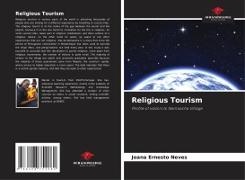Read more
Religious tourism in various parts of the world is attracting thousands of people who are looking for a different experience by travelling to sacred sites. The religious tourist is at the centre of the gap between the tourist and the pilgrim, because if on the one hand his motivation for the trip is religious, he visits sacred sites, takes part in religious celebrations and other actions of a religious nature, on the other hand he opens up space to live other experiences that are not religious. Vila da Namaacha is a place that since the period of Portuguese colonisation in Mozambique has been used to worship the Virgin Mary, and perigrinations are held every year. In this study it was possible to conclude that this destination is purely religious, since apart from religious movements, the number of visitors is quite small. The majority of visitors to the village are adults and university graduates (possibly because the majority of those questioned came from Maputo, the country's capital, where access to higher education is more open). The data indicates that there is a certain gender balance, and that they are open to other experiences.
About the author
Master in Tourism from ESHTE-Portugal. She has extensive teaching experience, mainly in the subjects of Scientific Research Methodology and Knowledge Management. She has attended a number of short courses on ethics in social research, writing scientific articles, among others. She has held management positions at ESNEC.

